- Administrator
- Albums and Singles
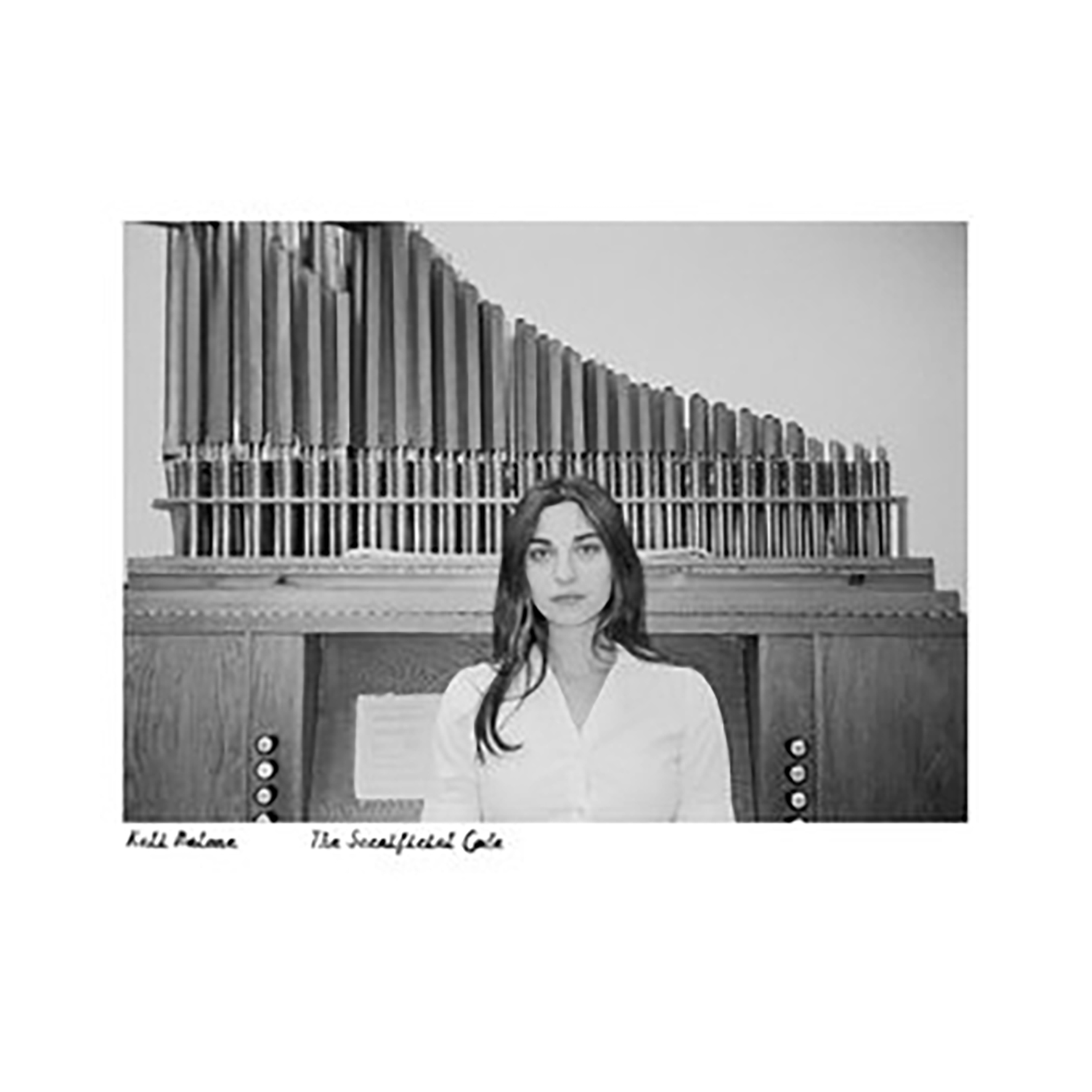 I was recently very surprised to discover that Kali Malone is from Colorado, as she has been quite an uncannily ubiquitous and quietly influential presence in European experimental music circles over the last couple of years. That role is especially remarkable given how her solo work increasingly sounds like it could have been composed a few hundred years ago (a direction largely rooted in a fateful meeting with an organ tuner). This latest release is the culmination of Malone's recent passion for pipe organs, following in the wake of last year's brief yet excellent Organ Dirges 2016-2017 EP (Ascetic House). The two releases are quite similar aesthetically, as Malone remains quite found of slow-moving and meditatively drone-like compositions, but The Sacrificial Code is simultaneously simpler and more ambitious than its concise predecessor.  In fact, this sprawling double album of organ works is an absolutely monolithic statement (and a fitfully mesmerizing one at that). To my ears, it admittedly errs a bit on the side of overwhelming, but The Sacrificial Code is probably exactly the album that longtime fans were hoping Malone would someday release.
I was recently very surprised to discover that Kali Malone is from Colorado, as she has been quite an uncannily ubiquitous and quietly influential presence in European experimental music circles over the last couple of years. That role is especially remarkable given how her solo work increasingly sounds like it could have been composed a few hundred years ago (a direction largely rooted in a fateful meeting with an organ tuner). This latest release is the culmination of Malone's recent passion for pipe organs, following in the wake of last year's brief yet excellent Organ Dirges 2016-2017 EP (Ascetic House). The two releases are quite similar aesthetically, as Malone remains quite found of slow-moving and meditatively drone-like compositions, but The Sacrificial Code is simultaneously simpler and more ambitious than its concise predecessor.  In fact, this sprawling double album of organ works is an absolutely monolithic statement (and a fitfully mesmerizing one at that). To my ears, it admittedly errs a bit on the side of overwhelming, but The Sacrificial Code is probably exactly the album that longtime fans were hoping Malone would someday release.
Kali Malone's brief career has been quite an improbable and interesting series of bold decisions and chance meetings.The most significant event, however, was her decision to move to Sweden as a teenager soon after meeting Ellen Arkbro at a show in NYC.Once there, Malone was quickly won over by thriving artist communities like Fylkingen and resources like Stockholm's Elektronmusikstudion (EMS) and threw herself wholeheartedly into carving out her own role.In fact, I knew about the label that Malone co-founded (XKatedral) months before I even knew anything about her own work.Also of note: Malone was a classically trained vocalist and sometimes guitarist before switching hemispheres, but she has since become known primarily as a synth and organ composer (though her early tapes still feature some guitar).In keeping with that inscrutable and enigmatic trajectory, her first album was composed for an unconventional string ensemble enhanced by gongs, sine waves, and tapes.Consequently, it is fair to say that each new Kali Malone release is kind of a surprise, as she seems to be in a continual state of restless evolution and reinvention.There is one notable constant though: Malone is extremely interested in unusual and precise tunings and that goes a long way towards explaining how she wound up making an album like The Sacrificial Code.If she used an unusual tuning for this particular album, she kept it to herself, but she is an apprentice organ tuner who has employed Just Intonation in the past (and her 2016 collaboration with Caterina Barbieri & Ellen Arkbro was composed for guitars "united in the pythagorean and septimal region of the harmonic spectrum."In short, Malone is an artist with a deep understanding of how frequencies interact.
When I listen to The Sacrificial Code casually, however, it sounds like a very straightforward (if anachronistic) album of simple organ hymns.In fact, there is almost nothing on this release that would sound at all out of place at an organ mass at a normal Catholic church, which makes it a bizarrely backwards-looking and traditional album on its face.It is hard to say how much of that elegiac and "religious" tone was intended and how much of it stems from the constraints of Malone's chosen instrument and the features that led her to choose it in the first place.The song titles certainly suggest the former was a significant force, but Malone was more explicit in her intention to "flow against the grain of the prevailing musical hegemony." For one, she purposely close-mic’d the organ to eliminate natural reverb.Also, she notes that the pieces were "compositionally stripped of gestural adornments and spontaneous expressive impulse" and that she was attempting to achieve "transcendence through self-restraint."
That rigorously restrained and stripped-down approach is the big caveat with The Sacrificial Code, as many of Malone's compositions are too austere to make a strong impression melodically, though the intertwined and ascending themes of the title piece are quite lovely, as are some of the rich harmonies of "Litanic Cloth Wrung."Also, the album is padded out a bit with live versions of "The Sacrificial Code" and two pieces from Organ Dirges.All of that suggests that Malone hubristically attempted to stretch a modest batch of good ideas across four full sides of vinyl (or three CDs), but my opinion changed dramatically when I listened to the album on headphones: The Sacrificial Code is essentially two very different albums masquerading as just one.On an overt level, it is a likably meditative (if unremarkable) suite of minimalist organ hymns, but closer listening reveals a stealthily concealed noise/sound art album hiding amidst the sustained drones and overlapping harmonies.The latter is what makes this album a fascinating achievement, as Malone cultivates a complex and vibrantly shifting feast of oscillations that puts her in roughly the same league as folks like Eliane Radigue and Catherine Christer Hennix.While I now mostly view the melodies and chord progressions as a devious smoke screen that distracts from the real action in the details, I am quite struck by how seamlessly and ingeniously Malone was able to achieve two very different ends at once: she sneakily made a fine experimental music album, yet also made a bold conceptual statement about the value of simplicity and directness.
Viewed in that light, almost everything about The Sacrificial Code makes perfect sense and leads me to believe that Kali Malone might be some kind of visionary or genius (albeit one who is very prone to understatement and subtlety).I still think the album is overlong, but the lesser pieces became considerably more compelling once I grasped that everything Malone played was likely chosen to feed the cloud of overtones and oscillations that remained in its wake. The overall effect is akin to gazing at a pleasing painting, then looking at an X-ray of the same painting and being utterly dazzled by the depth and intricacy of a completely different image hiding behind the surface.Needless to say, that is quite a cool trick and I cannot think of any other artist who has done it this skillfully.As such, The Sacrificial Code occupies a curious place for me, as it is an imperfect album that is nevertheless a perfect and powerful statement of intent.If I had never heard it, I would probably still be following Malone's career and occasionally enjoying an album or two, but this album is the one that finally awakened my ears to the frequency sorcery that is the true heart of her work.I suppose that makes The Sacrificial Code a landmark album of sorts, as it is a high profile release that will likely draw in a lot of curious new listeners and it captures Malone at her most focused and aesthetically distinctive.If those new listeners take the time to get attuned to Malone's frequency, they will not be disappointed: The Sacrificial Code is strong evidence that Kali Malone is one of the most promising and inventive composers of her generation.
Samples can be found here.
Read More
- Administrator
- Albums and Singles

Benoît Pioulard’s monumental EP May was originally released through his imprint (Disques d'Honoré) digitally and as a limited edition cassette that quickly sold out.
This LP features the May EP in its entirety (side A) and the Atra EP, which encompasses four brand new, previously unreleased tracks (side B). Atra is Latin for "black;" this collection is intended to be a blustery penumbra against the verdancy of the May EP.
Releases September 10, 2019 on Past Inside the Present.
Read More
- Administrator
- Albums and Singles

Maninkari's third session of L'océan rêve dans sa loisiveté.
All selections composed, improvised, recorded by Frédéric & Olivier Charlot : santoor, cimbalom, duduk, viola, synths, frame drums, percussions, cello, melodica, jaw, harp, voice, zither.
Claudie Ponget and Catherine Marmet : voice, drone
More information can be found here.
Read More
- Administrator
- Albums and Singles
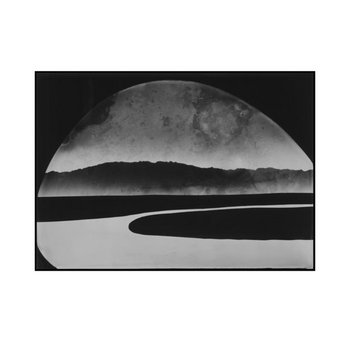
Razen celebrate their 10 yr anniversary with Ayîk Adhîsta Adhîsta Ayîk, an album that takes a paragraph from CG Jung's Memories, Dreams, Reflections as a reference point to set off a journey that goes from light to dark, from day to night, from life to death, and back.
As much a reflection of primal imagery and rituals of knowledge as a way of coming to terms with anxieties about the chaos of the night, the album concerns itself with the question: who - or what - are we in the moments before (re-)birth, before waking up, in the state inbetween darkness and light?
On Ayîk Adhîsta Adhîsta Ayîk, the wind instruments and organ stabs of band leaders Kim Delcour and Brecht Ameel are expanded with Pieter Lenaerts' five-string double bass and sarangi, Jean-Philippe Poncin's bass clarinet and chalumeau, and Paul Garriau's hurdy-gurdy.
The album sees the group explore new straight-to-the-gut emotional territory, while simultaneously showcasing Razen's intuitive, continuous investigation of the acoustic properties and resonant possibilities of churches and chapels in the countryside around Brussels; after Remote Hologram (2014) and The Xvoto Reels (2017), this time the St. Agatha Church (St.-Agatha-Berchem) functions as the conduit for Razen's acoustic sound jolts.
With the past ten years entirely devoted to the search for archetypical timbres and connotations by improvising on Early Music instruments, it's no wonder that the world of Razen would one day collide with the world of CG Jung and take his writing as an inspiration.
A sonic hex tour de force from this unique ensemble, Ayîk Adhîsta Adhîsta Ayîk is a present-day, nocturnal emitter of the Coleridge quote that opens Jung's Memories:
"He looked at his own soul with a Telescope. What seemed all irregular he saw and shewed to be beautiful Constellations and he added to the Consciousness hidden worlds within worlds."
Brecht Ameel: Church Organ, Bouzouki
Kim Delcour: Single Reed, Tambourine, Shawm, Tenor Recorder,
Bass Recorder, Bagpipe
Pieter Lenaerts: Double Bass, Sarangi
Jean-Philippe Poncin: Bass Clarinet, Chalumeau
Paul Garriau: Hurdy-Gurdy
More information can be found here.
Read More
- Administrator
- Albums and Singles
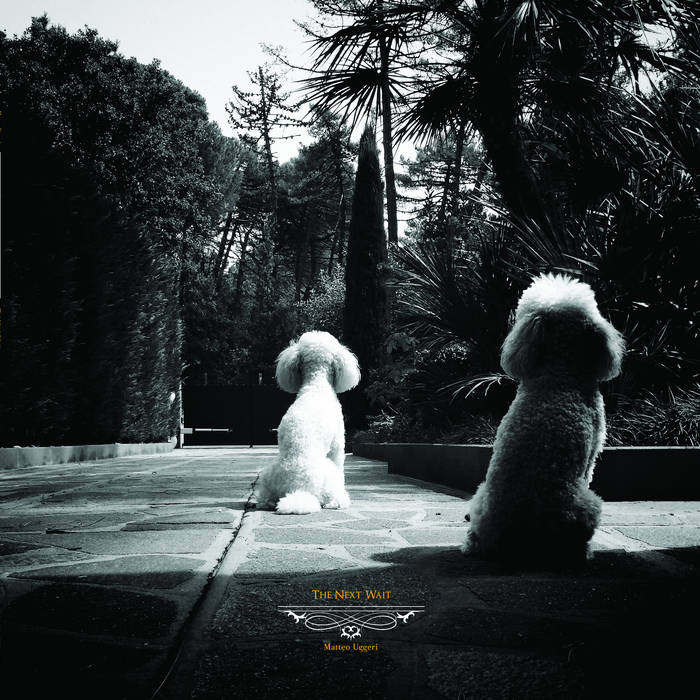
In 2013 my wife Gaia was pregnant. We were then waiting for our first born to come, expected for November of that year. A few little obstacles and troubles occurred during the nine months, so my anxious nature at the time generated in me the need to somehow express the feelings in a record, where I conveyed the worries that a father, especially a musician that needs his own moments for playing, may have in terms of an expected potential future lack of time and energies.
I also decided to involve fellow musicians I got to know at the time, like Maurizio Abate (guitar), Enrico Coniglio (guitar and organ), with whom afterwards I would have made full albums - but you can find here the first traces of our collaboration. There were Andrea Serrapiglio (cello) and Cristiano Lupo (bass), that I knew for quite some time, and featuring female voices. I asked Dominique Van Cappellen-Waldock (that I discovered through her marvellous presence on a Doug Sharin solo album) if she wanted to sing on a track, and she did, providing her own lyrics. The American singer Jenny Oakley, aka Empty Vessel Music, did the same on track one, as well as a glitching sample from Nicola Ratti is also featured.
The central piece of the whole album can be considered “Family Man”, a sort of cover from a song by Black Flag, totally reversed by my wife Gaia Margutti. She re-interpreted the lyrics her own way, and she performed it in an unforgettable session of home recordings, with my daughter Olivia, now finally born, hanging from her neck.
Indeed, the album took quite a long time to be made, and then the ‘wait’ was over, transformed in the new life we were all three now living together.
The second half pieces, actually a long track sliced in three parts, are dedicated to this transition period, where also tensions in the family are occuring. The tracks are built on a piano melody provided by the Japanese artist, Mujika Eisel, that collaborated with me on a previous album.
Now it is 2019, and not only is Olivia 5 years old, but also Nora was born, in March 2017. This album, is now dedicated to both of them, and can in a away, be perhaps considered a bit too ‘direct’, (as a Henry Rollins song!) but it’s for me a sincere expression of feelings and sensations. The concept of waiting can be interpreted in different ways, and anyone can ask himself what the two dogs in the front cover (kindly provided by the Italian photographer Adriano Zanni) are expecting to come.
Anyway, the album is finally released, thanks to the generous and neverlasting effort of US label Infraction, available in the three formats of LP/CD/DL, with an additional 7” containing two outtakes entitled “After the Wait” (exclusive to physical formats only), when the new life was becoming a new set of routines.
I even made a video in 2018, featuring - guess who? - my family. It can be seen on Infraction Bandcamp and on my website as well.
I hope that this long pathway of experiences, feelings, music and visual art will be shared with careful listeners all over the world. - Matteo Uggeri
Album editions :
100 copies of clear blue water LP + 7 inch (after the wait)
150 copies of black vinyl 180 gram edition
Each LP is housed in a Stoughton tip-on style heavy sleeve. The 7" is a clear vinyl.
250 copies of full-length CD. The first 100 copies will contain a bonus CDR with 2 exclusive tracks (entitled 'After the Wait'). The CD will be housed in a Stoughton style mini-lp gatefold sleeve.
credits
releases September 10, 2019
Maurizio Abate (guitar)
Enrico Coniglio (guitar, organ)
Andrea Serrapiglio (cello)
Cristiano Lupo (bass)
Dominique Van Cappellen-Waldock (vocals)
Jenny Oakley (vocals)
Nicola Ratti (electronics sample)
Gaia Margutti (vocals)
Mujika Eisel (piano)
For further explanation go here.
Read More
- Administrator
- Albums and Singles

"Spiritual Noise" is how My Cat Is An Alien baptized their own music and intermedia work at the beginning of their third decade of activity.
Volume 2 in the ongoing "Spiritual Noise" series is a further step ahead in the unheard new music territories of MCIAA.
Released on the new Antigravitational imprint, the record label & multimedia platform created and curated by MCIAA and set up with gallerist and publisher Marco Contini, the album was designed following principles of seriality and of installation art: the vinyl LP takes the shape of a multimedia object which displays a proper artbook mounted on the cover jacket, giving access to cinematic poetry films and extra contents for a fully immersive experience.
More information can be found here.
Read More
- Administrator
- Albums and Singles
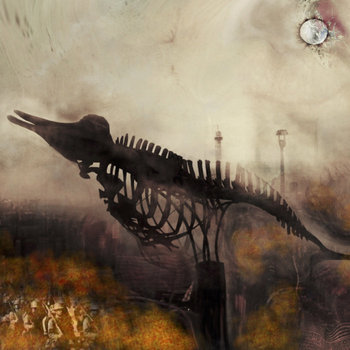
A year in the making in complete secrecy, the intention was to spring The Moon Cracked Over Albion without any warning or preview upon an unsuspecting World. In fact, personal anticipation scuppered that plan and here is the finished article a little ahead of time. Conceived and recorded in a nation (a World?) so tragically divided, it could fall apart, it's hoped that just a few seeds of hope and optimism can be sown over the course of the time you'll spend in this peculiar World.
The CD is in production right now. An expanded vinyl edition is planned for early 2020. Please note that Track 10 is the exclusive 4th side for the coming vinyl edition.
More information can be found here.
Read More
- Administrator
- Albums and Singles
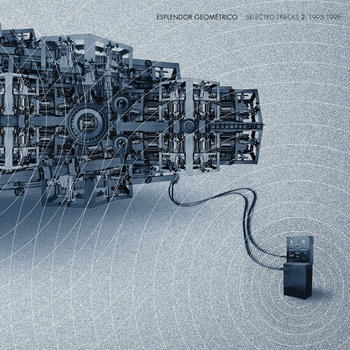
Selected Tracks 2 is a double-album with a new selection of tracks recorded by Esplendor Geométrico between 1995 and 1998. Ten of the thirteen tracks appear for the first time on vinyl. Some rarities, only published in very limited CD-R during the nineties and without distribution, are also included.
E.G. are pioneers and masters of rhythmic industrial music since their formation in Madrid in 1980, enjoying an international cult status for decades. During the nineties, they developed their unique and unmistakable style, influenced by the new synthesizers of those years and digital technology.
In this double-album, we find machine and hypnotic rhythms, metallic sounds, tribal sonorities, distortion, collages with voices ..., which also show their influence on the current trends of industrial techno. The songs have been chosen from albums like Polyglophone (released only on CD in 1997), EN-CO-D-eSPLENDOR (published in Japan-only on CD in 1998), and exclusive live tracks that do not have studio versions: "Al Asalto," "Nuevo Frente," "Elektrozavod," or "Ciudad Électrica." Also included are three tracks from the Syncrotron EP (Hymen 1988).
"When I think of the word Industrial... I think machines, gears, factories with tall smoke stacks. Esplendor Geométrico means exactly that to me. Hard minimal rhythmic machine music that grinds like a huge device that is cutting metal girders for large buildings. Though most would quote bands like Throbbing Gristle, Neubauten & Coil as being the truest form of industrial, the music of Esplendor by far best describes the word 'industrial' when applied to music." (Adam-X, 2004)
More information can be found here.
Read More
- Administrator
- Albums and Singles
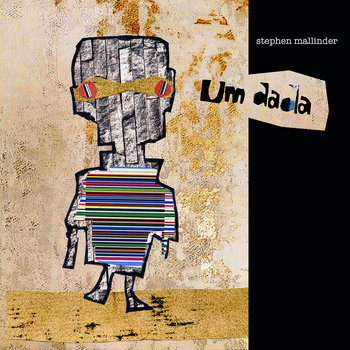
While steering Cabaret Voltaire through the 1980’s, Mallinder was already busy piecing together his first solo album entitled “Pow Wow”, which would help define Mallinder’s interest in the more leftfield electro sounds shaping England at the time. It was this diverse and abstract hybrid that helped inspire generations of artists and musicians through steeping raw machine funk within the whimsical and absurdist ideology.
Since the release of “Pow Wow” in 1982, Mallinder continued his pioneering work with Cabaret Voltaire, as well as recording and touring with his electro projects Wrangler, Creep Show, Hey Rube, Kula, and Cobby & Mallinder. In addition to his non-stop schedule in electronic music, his professional life as a journalist, broadcaster, producer and now a professor of Digital Music & Sound Art at the University of Brighton, has lead Mallinder to a unique point in his career. Most in his position would be caught up in rosy retrospection, but Mallinder himself says, “There’s too much digital finger-licking right now; every thought and desire at the turn of a dial… well a click of the mouse. And there’s a giddy, false nostalgia about the analogue past. Sorry to burst your bubble but the truth of history is more mundane: practical, pragmatic...Um Dada is about ‘play’ – cut and paste, lost words, twisted presets, voice collage, simple sounds – things that have been lost to technology’s current determinism. Let the machines talk to each other, let them dance .. they lead, we follow.”
Um Dada opens up with the exact machine-led surrealism that Mallinder recommends in “Working (You Are)”. A thick, stripped back dance floor groove provides the ideal foundation for Mallinder’s eccentric vocal cuts. The frisky chops present an almost twisted irony, subtly bringing to mind the role we’re all forced to play as just another cog in the ever grinding capitalist machine of life. Yet, somehow, the listener is left feeling optimistic. A prime example of simplicity at work.
Tracks such as “Satellite” give a skillful illustration of Mallinder’s adeptness with his musical expertise while preserving his core historical context as only simple reference. The underlying bassline and percussion, coupled with the floating melodies and airy vocal refrain disclose the vulnerabilities of love and loss without a hint of irony or nostalgia.
Um Dada is mischievously idealist, however never loses touch with reality. Offering structure while simultaneously dismantling any and all preconceptions. The spirit of sincerity that sustained Cabaret Voltaire’s lengthy career is abundantly present within founder Stephen Mallinder’s journey through his own whimsical utopian consciousness and staking claim to an identity that is solely his own.
1. Working (You Are)
2. Prefix Repeat Rewind
3. It's Not Me
4. Um Dada
5. Satellite
6. Colour
7. Flashback
8. Robber (bonus track)
9. Hollow (bonus track)
https://stephen-mallinder.tmstor.es/
Read More
- Administrator
- Albums and Singles

Heaven is a work of contemporary church music. Centrally occupied with the subject of death, its conceptualization was catalyzed by Spiluttini's discovering his mother's preparations both for her own death and for his. He arrived at her home in 2015 to be led into the local church and shown the two adjacent places she had reserved for their urns. The tracks on Heaven together consist of an analogously personal and anticipatory negotiation with death.
Partly derived from organ recordings made in the same church, the album frequently enlists Arvo Pärt’s compositional method of tintinnabuli. Aside from the thematic logic of its sacred associations, the method suits Spiluttini's tendency, in spite of heavy and dynamic passages, to minimize tonal complexity. His characteristic uses of gnashing bass, restlessly irregular pacing and serrated distortion return. This time, they combine with pads, harps, fluttering organs and swooping choirs.
Track titles throughout Heaven conjure intense emotional conflicts, especially those arising from experiences of embodiment. Touch isolation is a term for the toxic masculine stigma against platonic touch between men. If such a reference on an album preoccupied with death and afterlife raises the question of whether Spiluttini considers any touch – let alone platonic – to be possible in Heaven, the title "Flesh Angel" perhaps answers it. As with "Body at War" and "Weakened Centurion," such a title positions the agitation of its music among ongoing struggles with body acceptance. Meanwhile, "Rainbow Bridge" recalls the 1980s prose poem promising an eternal reunion in death with one’s beloved lost pets. In context, these various indices seem to capture the yearning speculation that, as the nexuses of experience, bodies are not discarded in death; on the contrary, they achieve a state of perfection.
Heaven revolves within dramatic and ever-changing vignettes. As church music, it lacks real communal participation or fidelity to hymnal text. Instead, it must come to terms with negation and eternity as dependable threats to generational and spatial distance, to personal struggles with earthly embodiment and to the anxious, hyperactive navigation of identity in late modernity.
More information can be found here.
Read More
- Administrator
- Albums and Singles

The fourth album from HTRK, the duo of Jonnine Standish and Nigel Yang, arrives five years on from 2014's Psychic 9-5 Club. While some much-loved HTRK hallmarks remain—the combination of space and intimacy, the unmistakable interplay between Yang's guitars and Standish's vocals—Venus in Leo differs markedly in its energy, returning to HTRK’s underground rock past with the stylistic playfulness and variety of a modern mixtape.
Over the soft strums of acoustic guitar, the album’s introduction, "Into the Drama," posits a theory that "what was once considered self-sabotage could be revisited as being under the influence of Venus in Leo," Standish explains. Fingerpicked guitar loops rise slowly and fall over a cold, brittle beat. Previously released lovesong "Mentions" finds Standish exploring the lack of physical intimacy in the social media age. Elsewhere, there are emotional highs, like on the kaleidoscopic single "You Know How to Make Me Happy," which details a suspended state of ecstasy, Standish commending her partner's conscious efforts to prop her up with compliments. "New Year's Day" traces a flimsy resolution to get healthier, instantly busted by an evening of debauchery, recalling "the worst possible start to the year with bad friends and bad behavior." The silver lining is the sunrise: "pink, red, orange, white, peach" Standish repeats as the track laps with a velvety, hypnotic refrain.
Archetypal themes emerge as the band explore the makings of personality. Standish revisits her childhood home in a recurring dream ("Dream Symbol"), a doomed first kiss ("New Year’s Eve") and high drama ("Venus in Leo"). Recorded more or less live in HTRK’s home studio in the Dandenong Ranges outside of Melbourne, the album's simple production reveals gorgeous, toned-back arrangements and an evolving, idiosyncratic songcraft.
It's been ten years since HTRK released their breakthrough first album, Marry Me Tonight. The band has undergone profound changes, with the first two albums released amid the deaths of close friend and collaborator Rowland S. Howard and HTRK co-founder Sean Stewart. Psychic 9-5 Club set them on a path of self-discovery, and Venus in Leo marks a spirited new chapter by one of the most distinctive bands of the past decade.
Out August 30th on Ghostly International.
Read More

